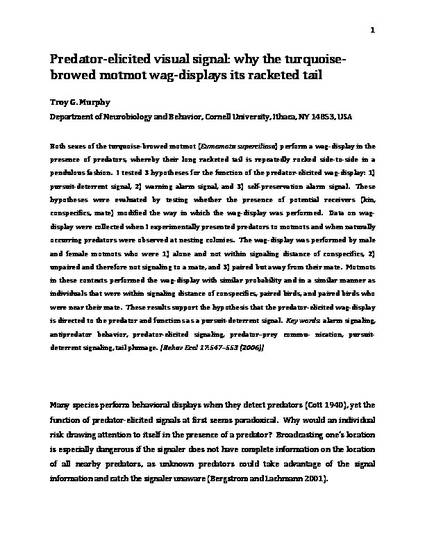
- Biology and
- Life Sciences
Both sexes of the turquoise-browed motmot (Eumomota superciliosa) perform a wag-display in the presence of predators, whereby their long racketed tail is repeatedly rocked side-to-side in a pendulous fashion. I tested 3 hypotheses for the function of the predator-elicited wag-display: 1) pursuit-deterrent signal, 2) warning alarm signal, and 3) self-preservation alarm signal. These hypotheses were evaluated by testing whether the presence of potential receivers (kin, conspecifics, mate) modified the way in which the wag-display was performed. Data on wag-display were collected when I experimentally presented predators to motmots and when naturally occurring predators were observed at nesting colonies. The wag-display was performed by male and female motmots who were 1) alone and not within signaling distance of conspecifics, 2) unpaired and therefore not signaling to a mate, and 3) paired but away from their mate. Motmots in these contexts performed the wag-display with similar probability and in a similar manner as individuals that were within signaling distance of conspecifics, paired birds, and paired birds who were near their mate. These results support the hypothesis that the predator-elicited wag-display is directed to the predator and functions as a pursuit-deterrent signal.
